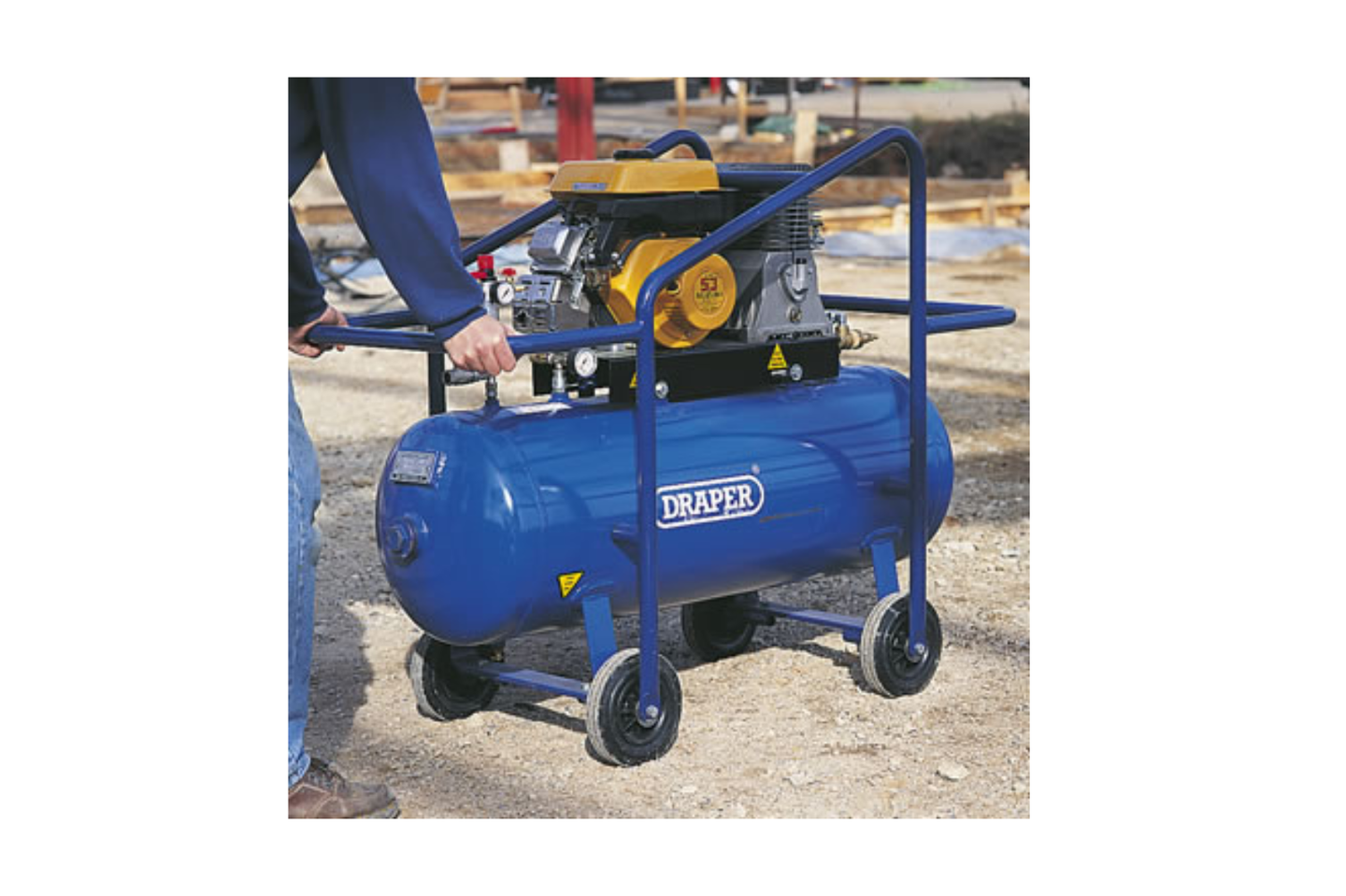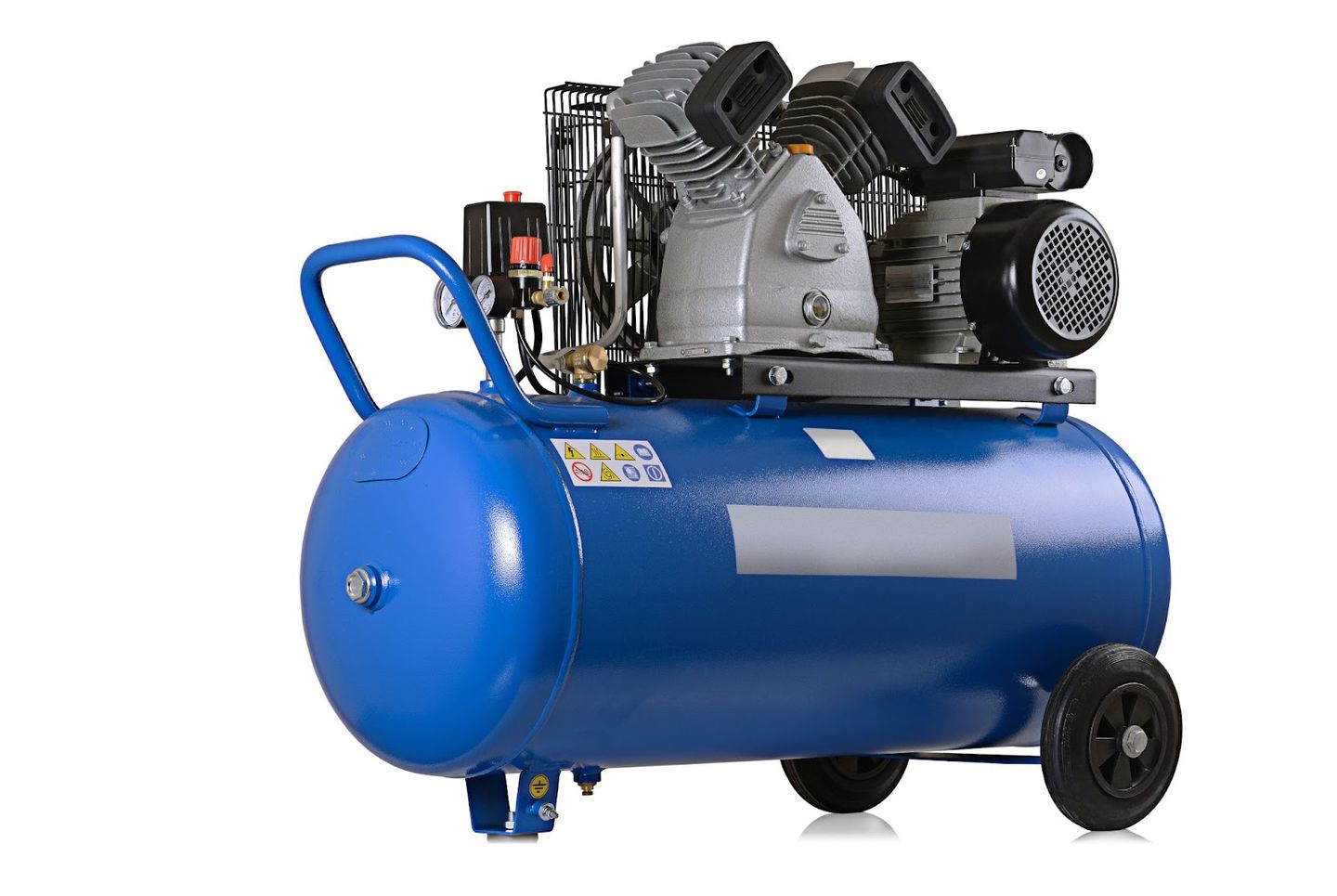An air compressor is a must-have tool for any workshop, garage or industrial setting. It is a versatile piece of equipment that can be used to power a wide range of pneumatic tools, such as paint sprayers, impact wrenches, and sanders.
Identifying the appropriate air compressor for your application can be challenging. Different types of compressors have different features and benefits. Certain compressors are designed for particular tasks while others are multi-purpose and can accommodate multiple uses.
This guide provides an overview of the different types of air compressors, their functions, and the industries they are commonly used in.
By the end of this guide, we're confident you will have all the information you need to select an air compressor for your workshop or construction site.
Let's dive in.
What is an air compressor?
Simply put, an air compressor is a machine that compresses air using an electric motor, diesel or gasoline engine, etc. and stores it in a tank or cylinder. This compressed air can then be used for a variety of purposes, from inflating tires and powering tools to running air-powered machinery in factories and large industrial settings.
So how does it work?
At its most basic, an air compressor has a motor that powers a piston or impeller, compressing the air and sending it into a storage tank. When the tank reaches a certain pressure, the compressor turns off and the stored air can be released through a valve for use.
One thing to keep in mind is that most air compressors require regular maintenance to keep them running smoothly. This can include things like changing the oil, replacing filters, and checking for leaks.
Understanding air pressure: What does PSI rating mean?
A compressor with a higher PSI rating can offer increased air storage capacity by compressing more air into the same size tank, allowing for longer operation of air tools. It is important to be aware that the PSI rating is not the only factor to consider when looking at air storage capacity. Additional factors such as tank size and compressor flow rate should be taken into account.
- Low-pressure compressors: These compressors typically deliver pressures of 150 psi (pounds per square inch) or less and are used for tasks like powering professional paint spraying systems, airbrushing, and to power dental tools and some medical devices.
- Medium-pressure compressors: These compressors typically deliver pressures between 150 and 1000 psi; they can be used for tasks such as powering pneumatic tools and inflating tires.
- High-pressure compressors: These compressors are designed to deliver up to 6,000 psi and are used for tasks such as providing air for breathing apparatus, powering pneumatic control systems, or performing gas injection in oil and gas reservoirs.
It's important to note that these classifications are not set in stone and can vary depending on the manufacturer and intended use of the compressor. Additionally, compressors can also be classified by their methods of operation, such as reciprocating compressors, rotary screw compressors, and centrifugal compressors. We'll discuss these specific types later on.

A breakdown of the different types of air compressors
Air compressors come in a wide range of shapes and sizes from small portable units to large industrial machines. They are categorised into two broad categories based on their internal mechanisms: positive displacement compressors and dynamic displacement compressors.
Beyond this (and to complicate things further), there are several types of common compressors that we will explore further below:
Positive compressors: In positive displacement compression, air from the atmosphere is taken into one or more of its chambers, and then blocked off at the inlet. As the size of each chamber reduces, the air inside is subjected to increased pressure until it reaches the pre-set ratio. The valve then opens and the air is released into the outlet system.
The following systems are positive displacement compressors:
- Reciprocating piston compressors
- Rotary screw compressors
- Tooth compressors
- Rotary vane compressors
- Scroll compressors
Dynamic compressors: These work by providing kinetic energy to the air, resulting in higher pressure. They can be further classified into two types: centrifugal compressors and axial compressors. Centrifugal compressors use a rotating impeller to accelerate the air, while axial compressors use rotating blades to compress the air.
The following systems are dynamic compressors:
- Centrifugal compressors
- Axial compressors
Rotary screw compressors: Key features and uses
The rotary screw compressor is a displacement compressor that creates pressure inside the housing by using two internal rotors facing opposite directions. In most cases, they are available in lubricated or oil-free versions.
Rotary screw compressors are equipped with an internal cooling system that requires minimal maintenance, making them a convenient choice. They offer continuous use capability and the power options range from 5 horsepower to 350 horsepower.
Key Features:
- Rotary screw compressors are highly efficient, providing a continuous flow of compressed air without pulsations.
- They have a smaller footprint compared to other types of compressors, making them ideal for space-limited areas.
- They are low maintenance and have a longer lifespan compared to other types of compressors.
- Rotary screw compressors are available in oil-free and oil-injected models, giving users the flexibility to choose based on their specific application needs.
Uses:
- Rotary screw compressors are commonly used in medium to large-sized applications, such as manufacturing and food packaging plants, auto-repair shops, and construction sites.
- They are ideal for applications that require a constant supply of compressed air, such as powering pneumatic tools, blowers, and pumps.
- Rotary screw compressors are also commonly used in refrigeration and HVAC systems for air conditioning and refrigeration applications.
- Rotary screw compressors are designed to operate at high temperatures or in low conditions, as required.
Reciprocating compressors: Key features and uses
In a reciprocating compressor, gas is drawn into a cylinder and then confined by a piston powered by a crankshaft. The high-pressure gas is then released into the discharge line.
Key Features:
- Reciprocating compressors provide high-pressure outputs of up to 30,000 PSI.
- Reciprocating air compressors are highly flexible machines, as they can be used for climate control applications that require pressures between 60-90 PSI.
- When considering a reciprocating air compressor, there are various options suited to different applications: single-acting, double-acting, single-stage and double-stage.
Uses:
- Many industries rely on equipment of this type, including gas transmission pipelines, petrochemical plants and refineries.
- They are usually seen at smaller work sites like garages and home construction jobs - they're not designed for continuous use.
- Multi-stage compressors are used to supply the necessary power for complex operations such as vehicle manufacturing and maintenance.
Axial compressors: Key features and uses
Axial air compressors are not frequently used in construction projects. Instead, they are most often used to power high-speed engines in transportation (ships and planes to name a few). Axial compressors have a high-efficiency rating, making them suitable for aerospace applications with a requirement for high horsepower. However, they tend to be more expensive than other types of air compressors.
Key Features:
- Axial compressors have advantageous design features which enable them to offer high efficiency and suit their use in applications that necessitate high horsepower and high flow rates.
- They are capable of providing a consistent stream of compressed air with uniformity.
Uses:
- Axial compressors are utilised in the aerospace industry to produce energy for high-speed engines in aeroplanes and other aircraft.
- They are also used in marine engines, such as those used in ships and submarines, due to their ability to handle high flow rates and provide a continuous flow of compressed air.
- Axial compressor technology is suitable for industrial usage, including power plants and gas pipelines, to enable the compression of high volumes of air or gas.
What size air compressor for spray painting?
The size of the air compressor required for spray painting is dependent on the type of paint and the nature of the project. It is advisable to use a compressor with at least 15 CFM (cubic feet per minute) for spray painting. HSS has a range of portable air compressors, one of which is the 15 CFM air compressor which is suitable for paint spraying. This air compressor is designed for compactness and manoeuvrability, making it a suitable choice for spray painting from job to job.
Looking to hire an air compressor? HSS offers a variety of electric and petrol-driven compressors
With HSS, you can explore the world of air compressors for hire - electric or petrol-driven, we've got plenty of choices! Our machines are meticulously serviced and checked for perfect performance.
We have quality rental equipment to meet your project needs and flexible rental periods plus competitive pricing - it's never been easier or more affordable to rent what you need, when you need it.
Contact us today to discuss your air compressor rental needs and to learn more about our range of compressors.






















































